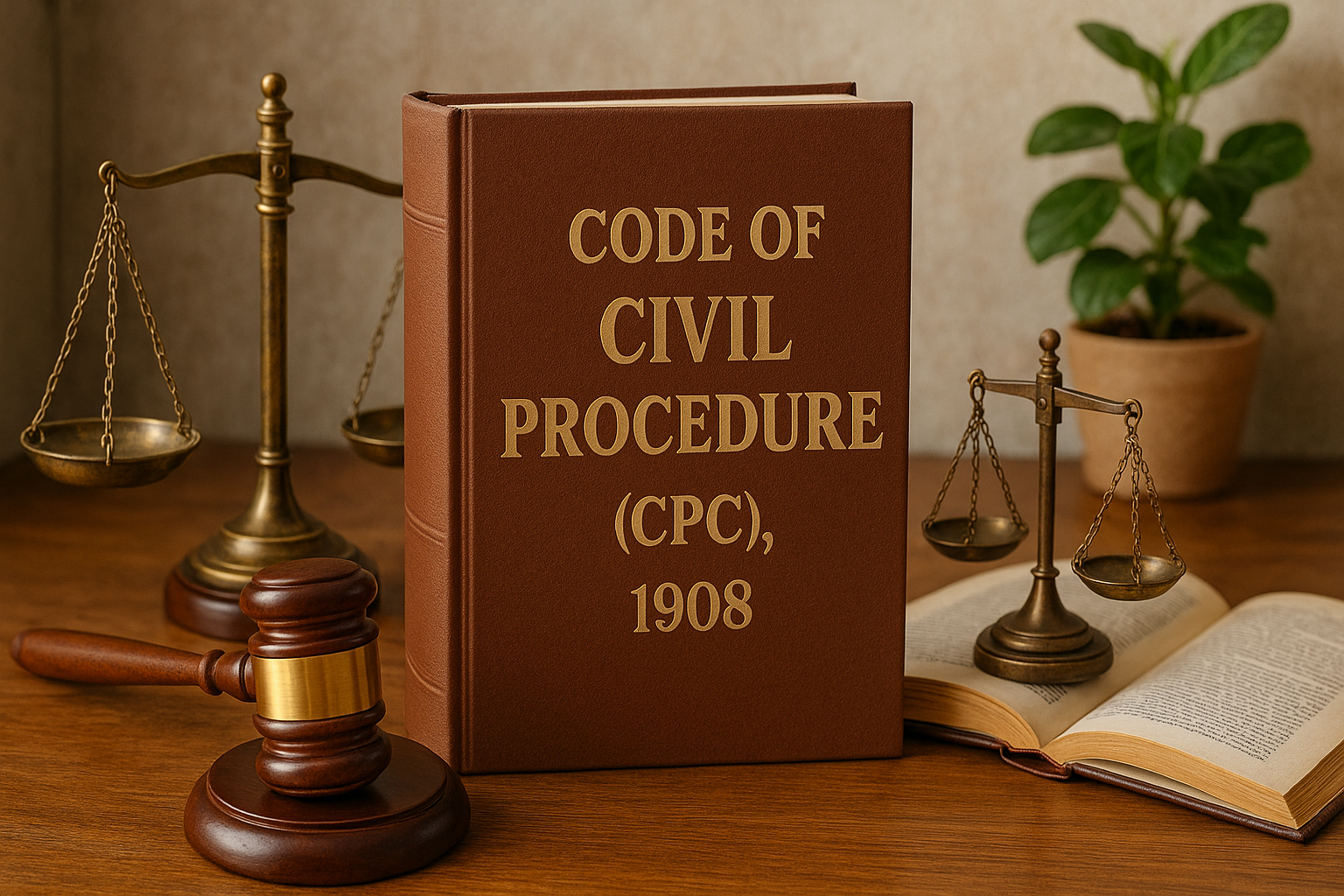What is the CPC?
The Code of Civil Procedure (CPC), 1908 is a procedural law that governs the process of civil litigation in India. It provides a systematic framework for the courts to deal with civil cases, including how suits are filed, tried, and adjudicated.
It does not define civil rights or liabilities but tells how to enforce them through courts.
When and by Whom Was It Enacted?
| Aspect | Details |
|---|---|
| Name of the Law | Code of Civil Procedure, 1908 |
| Enacted By | British Parliament (during British rule) |
| Drafted By | Committee chaired by Sir Earle Richards |
| Date of Enactment | 21 March 1908 |
| Date of Commencement | 1 January 1909 |
| Applicable To | Entire India (except J&K earlier; now applies post abrogation of Article 370) |
Why Was It Introduced?
Before 1908, there were multiple procedural laws for civil matters in different regions of India, leading to confusion and inconsistency. The CPC was introduced to:
-
Create uniformity in civil court procedures.
-
Ensure fairness and transparency.
-
Avoid delays by setting fixed steps and timelines.
-
Provide guidance to both litigants and the judiciary.
Major Amendments Over Time
Although enacted in 1908, the CPC has been amended several times to keep pace with the needs of society and judicial reforms. Some major amendments occurred in:
-
1976 – Introduced key reforms to reduce delays.
-
1999 & 2002 – Focused on streamlining procedures and improving efficiency.
-
Recent Developments – Adaptation to e-filing, video conferencing, and ADR (Alternative Dispute Resolution)mechanisms.
Structure of CPC
The CPC is divided into two parts:
| Part | Content |
|---|---|
| Part I | Sections 1 to 158 – Basic principles and general rules |
| Part II | First Schedule (Orders & Rules) – Practical procedure (like how summons are issued, how evidence is taken, etc.) |
There are 51 Orders and 158 Sections that guide the actual court process.
Conclusion
The CPC, 1908 is a cornerstone of Indian civil justice. While it has colonial roots, its enduring relevance comes from its systematic approach to civil litigation. It balances procedural fairness with judicial efficiency, making it a vital subject for law students and practitioners alike.

